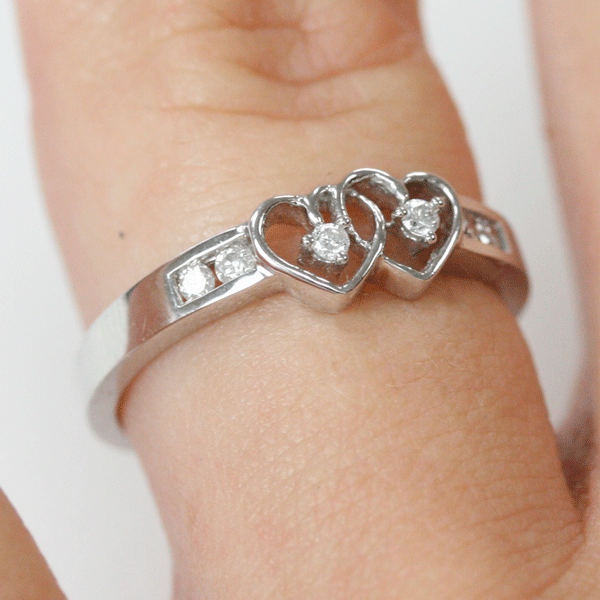Please bear in mind that we offer this information not as an excuse, but to clarify the reasons, provide the facts, and offer solutions for those who may encounter the problems described.
Metallic Abrasion
Make-up present on the skin or clothing is the most common cause of the blacking or smudging. Cosmetics often contain chemical compounds which are harder than the jewelry itself. Metallic abrasion occurs when these hard compounds come in contact with the jewelry metals and wear or rub off very tiny particles of metal which appears as jet black dust. Very finely divided metals always appear black rather than metallic. When this dust falls on absorbent surfaces, such as the skin or clothing it sticks, forming a black smudge.
To prevent this, cosmetics which contain zinc oxide, titanium dioxide, ferric oxide and calamine should be avoided. If this is not possible, we recommend that you remove rings and other metal jewelry while applying cosmetics. Also, clean with soap and water those skin areas which will be in contact with your jewelry.
Corrosion
Another cause of discoloration is due to the corrosion of the metals from which the jewelry is made. Pure gold itself will not corrode but is too soft for jewelry and therefore is alloyed with proportions of base metals – usually silver or copper.
The composition of 14K gold is 14/24 pure gold and 10/24 alloys. Only the base metal used for alloying corrodes, leaving the gold untouched. The chemical compounds of silver and copper which are formed turn very dark even when slightly corroded. This corrosion occurs under moist or wet conditions.
Our skin on which the jewelry lies, is provided with thousands of perspiration glands. Chemically the perspiration is mostly fat and fatty acids. These essentially mild chemicals are enough to cause corrosion of 14K gold especially when aided by warmth and free access of air. When this happens, we suggest that you remove your jewelry often and use an absorbent powder, free of zinc oxide, on the skin areas which come into contact with your jewelry.
Rings containing cooper and silver alloys, particularly sterling silver, corrode readily on the skin if enough salt is present. Simply exposing the hands to salted nuts, crackers or popcorn can cause such corrosion and discolor the skin. Rings should be taken off when you must expose your hand to salt.
Tarnishing of Sterling Silver Jewelry
Sterling silver is a cooper-silver alloy and is somewhat softer than most gold alloys. Therefore, it is more likely to be abraded to black dust by relative movement between the jewelry and the skin or clothing.
Sterling silver jewelry has a pronounced tendency to tarnish. The tarnish is always due to the contact with sulfur compounds. The main cause of tarnishing of silver is a trace of hydrogen sulfide gas in the air. This gas is particularly present in smoke from burnt raw fuel, such as coal or oil; in some fish or shellfish; and in polluted air.
The tarnish may turn the jewelry black and may also be rubbed off on the skin or clothing. A few people with especially moist skin may find that the sterling silver stains their skin green. This is due to the copper component of the silver alloy. When this occurs you should polish your jewelry frequently and used an absorbent powder on those moist skin areas which come into contact with your jewelry.
Other Problems and Solutions
Soap, detergent, wax, polish, an cosmetic creams may build up under a ring, causing a type of dermatitis. A burning sensation and redness of the skin results. To prevent, this you should remove all rings before using soap or detergent, and clean the rings frequently.
The wearing of silver jewelry when manipulating photographic chemicals of solutions may cause staining of the skin. When silver is attacked by a chemical solution such as nitric acid, the solution of silver salt formed is reduced back to silver by the skin. This silver is in a finely divided form and causes an intensely black stain. Silver jewelry should be removed before working with photographic chemicals or solutions.






The tarnish can leave black spots on your clothes but if there’s so much tarnish that it can stain your textiles, then you should do something about it. There are many easy DIY methods that one can use to clean the silver jewels.